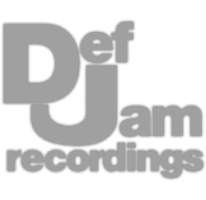Professional Analog Mastering.
Professional Analog Mastering.










Having used multiple tuning plugins and software, this one is the easiest to use, best sounding, and most flexible without requiring excessive time fine-tuning settings.
Although something like Melodyne is better if you really need to manage every aspect of a vocalist’s performance, Metatune still sounds more natural to my ear and introduces the fewest artifacts.
With it, we can select the key or individual notes, adjust the tuning speed or introduce a lookahead function for incredibly fast and stylized tuning, make the tuning speed program-dependent with the sustain dial, and even create a doubler effect which is great for BGVs.
What makes this plugin particularly useful is the note stabilizer, which limits note changes to a minimum of over 40ms, over 80ms, and over 200ms. This is perfect for vocals with many pitch fluctuations and is essential for creating a natural sound.
Let’s listen to it on a vocal that needs some tuning and notice how its artifacts are minimal and the sound is natural.
Watch the video to learn more >
At first glance, this plugin seems like a typical multi-effects chain, but its sound and flexibility are a step above any other plugin in this category.
The vocal is routed to a 6-band parametric EQ, a dynamics section, a gate, a de-esser, a high-frequency booster, and a saturator, but the routing can be altered for some stages.
For example, the EQ can be routed pre or post-processing - same for the de-esser.
The dynamics section includes 2 compressors, which can be enabled or disabled independently. They can be routed in series, used for frequency-specific compression, and fine-tuned in the setting’s window.
The gate includes 5 algorithms, with de-breath being the most useful for vocals. The de-esser is admittedly a little finicky, but with the settings window, it’s easier to dial in the exact sound I want.
As for the presence function, this wasn’t something I thought I’d need until I tried it - with Deep being the most natural-sounding option and my personal favorite. Like the other functions, you can fine-tune in the settings window.
The saturator offers 4 algorithms, with crisp being a perfect option for pop, hip-hop, and rock vocals.
My favorite part about this plugin is that if I use it after a temporal effect like reverb or delay, I can switch the processing from stereo to mid-side and affect each image individually, with distinct EQ, compression, gating, and so on.
So, let’s listen to this plugin being used after Reverb so I can show it to you. Also, for the rest of the video, I’m going to keep the vocal tuned with Metatune.
Watch the video to learn more >
This plugin is typically used for mastering or mix-bus processing, but it sounds amazing on vocals.
With mild drive and knee settings, the vocal instantly gets brought to the front of the mix, even after the increase in amplitude is compensated for via the output.
Quick, automatic release settings work especially well, as does a small dip to 250Hz, and a small boost to roughly 3kHz. Once the ‘Multi’ saturation setting is enabled, I often go into the settings window and adjust the saturation to best suit the vocal - for rock, an emphasis on the mid-frequency saturation sounds great.
For hip-hop and pop, some high-frequency saturation adds needed clarity and creates a crisp sound.
Then, I’ll lower the release times from the mid and high frequencies to keep details without creating any unwanted distortion in the lows.
Although this plugin was designed for mix bus processing, its effect isn’t subtle, and it works great on individual instruments. But, since it’s designed with mastering in mind, how it affects the timbre was very carefully controlled - this makes it perfect for creating a detailed vocal without making it sound over-processed or squashed.
Let’s take a listen, and notice how full and present the vocal becomes.
Watch the video to learn more >
This is, without a doubt, my go-to reverb for vocals and most instrument types. It’s not a natural or realistic sound, just an incredibly enjoyable one.
It utilizes impulse responses from the Bricasti M7 unit, a fantastic sounding high-end algorithm reverb, and offers additional functionality for some needed flexibility.
The most useful added feature, in my opinion, is the Ducking function in the advanced controls tab, which attenuates the reflections during the beginning of the transient. This lets the vocal’s consonant come through unaffected, which helps tremendously with intelligibility.
This allows me to dial in more aggressive reverb settings without the vocal becoming washed out or lost in the mix.
Although every impulse taken from the M7 unit sounds amazing, some personal favorites for vocals include the Vocal Plate under the Plates 1 tab, Studio B Close under the Rooms 1 tab, and Sunset Chamber under the Chambers 1 tab.
Lastly, all convolution reverbs introduce some pre-ringing distortion, but this one helps minimize how much is introduced by giving the user control over the latency.
Let’s take a listen to it, as I cycle through these 3 settings with the ducker included.
Watch the video to learn more >
I’d be lying if I said I completely understood this plugin — taking a brief look at the program routing window, the expert tab, and the function tab is enough to know I might not ever fully grasp everything this plugin can do.
Fortunately, the presets are pulled from the original unit, and additional options are added to give any user more than enough to start with.
Each preset uses some or all of the following:
Pitch Shifting and ModulationDelayFrequency ModulationAmplitude modulationFiltersADSR Envelopes, including ducking and general compression
And likely a lot more that I’m unaware of.
Looking through the vocal presets, I use the Tripler the most, and vary the mix amount and pitch shifting to suit the track. Beside Me is great for BGVs, as is Widened Delay, but this is barely scratching the surface of what it offers.
There’s so much going on here that I can’t do it justice, but I absolutely recommend downloading a demo of this plugin and spending an hour experimenting with the settings.
Let’s listen to a few presets with the mix and pitch-shifting functions altered.